
Roots
The pursuit of vibrant, healthy hair often feels like a whispered conversation, a deeply personal journey guided by inherited wisdom and quiet observation. For those with textured hair, this path holds unique contours, a rich landscape of coils, curls, and waves. When considering tools like hair extensions, a common question arises ❉ can they truly serve as allies in the quest for reduced breakage and greater length? To approach this query with thoughtful consideration, we begin at the very foundations, exploring the biological marvel that is textured hair and the delicate balance that sustains its growth.
Understanding textured hair’s unique biological makeup is the first step in determining how external elements like extensions interact with its inherent strengths and vulnerabilities.
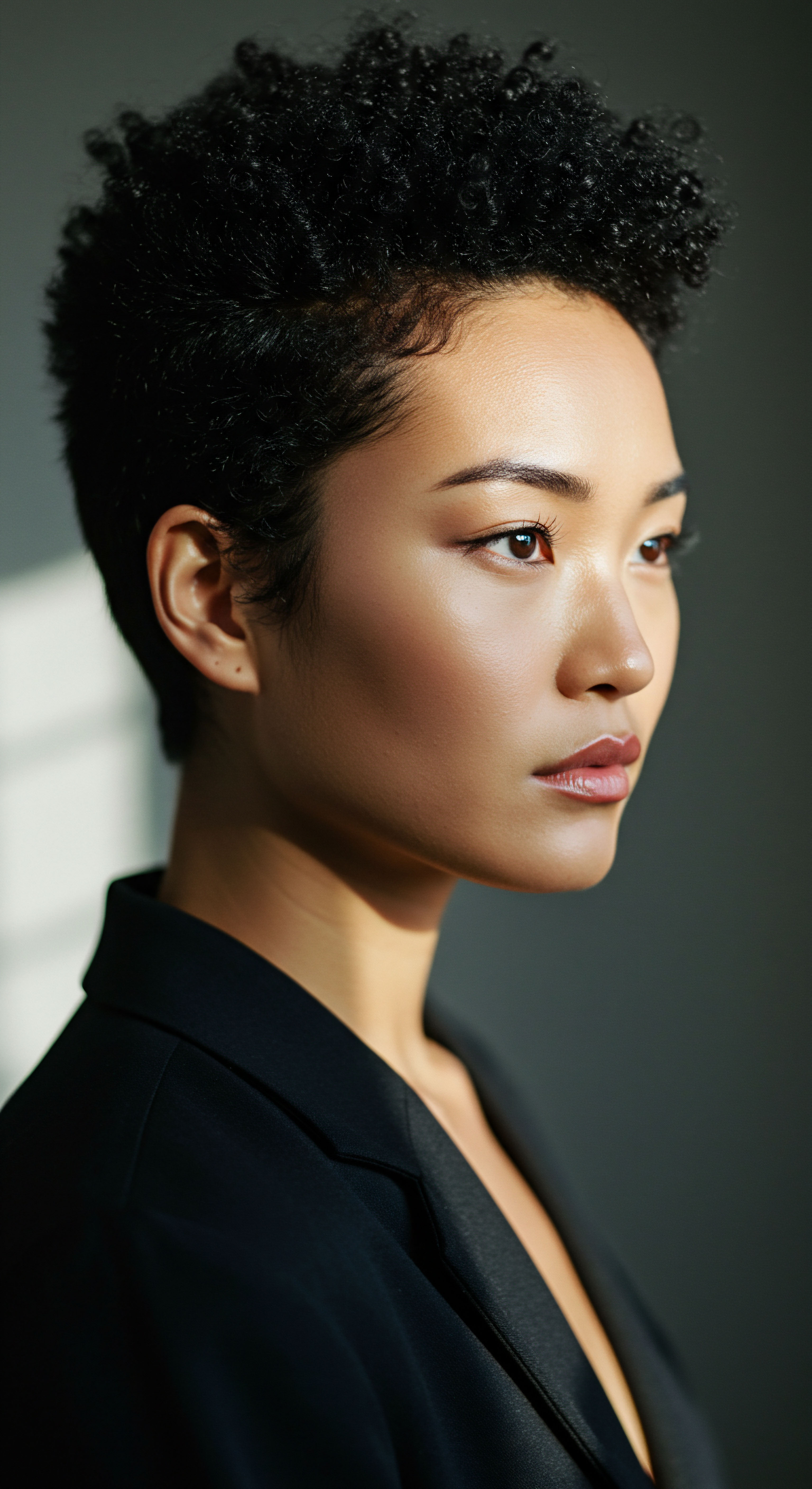
Hair Anatomy and Physiology Specific to Textured Hair
Each strand of hair, a delicate protein structure, emerges from a living hair follicle nestled within the scalp. This microscopic organ, the hair follicle, shapes the hair’s very character. For textured hair, these follicles often possess an oval or flattened cross-section, a departure from the round follicles that produce straight hair. This distinct shape influences the way keratin proteins align within the hair shaft, leading to the characteristic bends, twists, and coils.
The cortex, the central and thickest layer of the hair shaft, provides strength and elasticity. In textured hair, the distribution of keratin within this cortex can be less uniform, rendering the strands inherently more susceptible to mechanical stress and breakage compared to straight hair. Even with a higher lipid content, textured hair often experiences dryness due to its structural form, which can create areas of weakness and contribute to moisture loss.
The outermost layer, the cuticle, acts as a protective shield, comprising overlapping cells. In coiled hair, these cuticle scales may not lie as flat, making the hair more prone to moisture loss and potentially increasing friction between strands. This heightened susceptibility to external factors underscores the importance of a mindful approach to all hair practices, including the use of extensions.
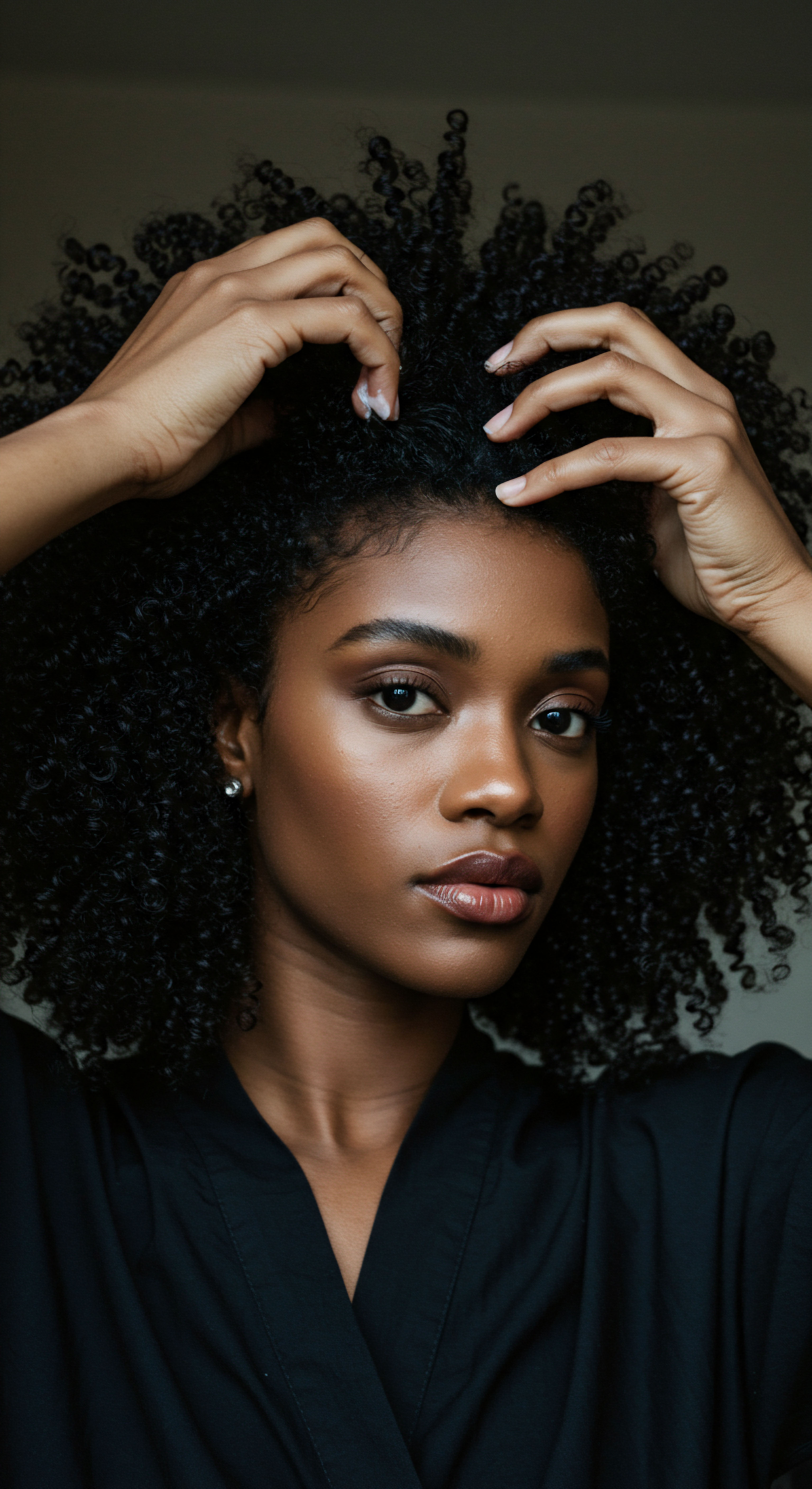
Textured Hair Classification Systems
For generations, communities have developed ways to speak about hair, describing its appearance and behavior. In more recent times, systems have emerged to categorize hair based on its observed features, such as curl pattern and texture. The Andre Walker Hair Typing System, developed in the 1990s, is widely recognized for its simplicity, categorizing hair into four main types (Type 1-4), with subtypes (a, b, c) based on curl pattern, texture, and volume. Afro-textured hair, often referred to as Type 4, spans a diverse range of tightly coiled patterns.
- Type 1 ❉ Straight hair, ranging from fine and soft to coarse and voluminous.
- Type 2 ❉ Wavy hair, with a gentle S-pattern, from fine to coarse.
- Type 3 ❉ Curly hair, with distinct spiral curls, from loose to tight.
- Type 4 ❉ Coily or kinky hair, characterized by tight coils and zigzag patterns, often with significant shrinkage.
Other systems, such as L’Oréal’s Hair Classification System, take a more scientific approach, using morphologic parameters like curve diameter and curl index to define curl and kink patterns. While these systems offer a helpful framework for understanding hair’s unique needs, they serve as guides, not rigid definitions. The lived experience of textured hair extends beyond simple categorization, embracing a spectrum of individual characteristics.

The Essential Lexicon of Textured Hair
To speak with clarity about textured hair requires a shared understanding of its specific terms.
| Term Coil |
| Meaning in Context A tightly wound, spring-like curl pattern, often seen in Type 4 hair. |
| Term Curl Pattern |
| Meaning in Context The natural shape of the hair strand, from straight to wavy, curly, or coily. |
| Term Porosity |
| Meaning in Context The hair's ability to absorb and hold moisture, influenced by the cuticle layer. |
| Term Shrinkage |
| Meaning in Context The apparent reduction in hair length when wet hair dries and its coils retract. |
| Term Density |
| Meaning in Context The number of individual hair strands on the scalp. |
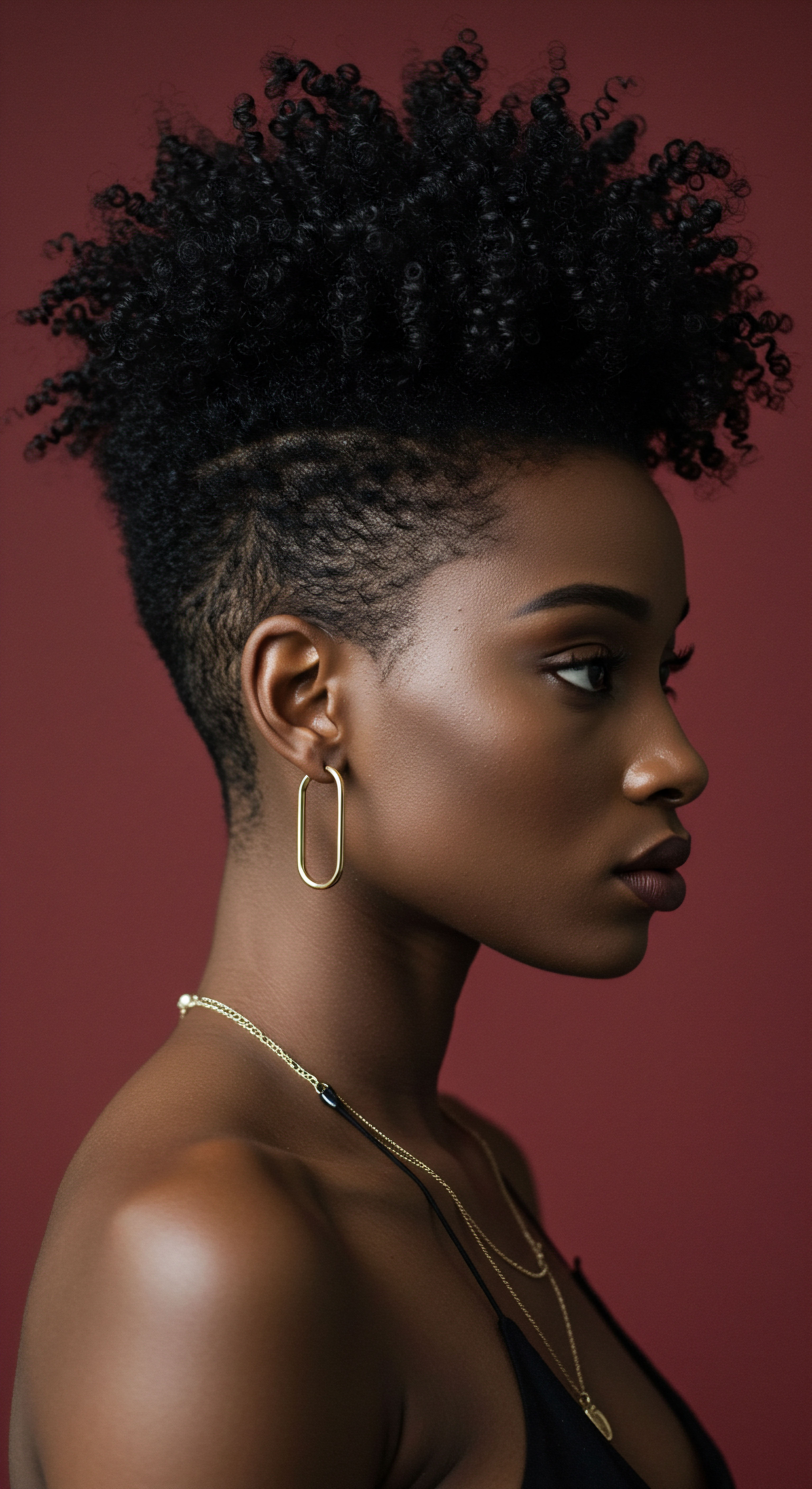
Hair Growth Cycles and Influencing Factors
Hair growth is a continuous, cyclical process, with each individual hair follicle moving through distinct phases.
- Anagen Phase ❉ This is the active growth period, where hair follicles produce hair fibers. It can span from two to eight years, determining the maximum length a hair strand can reach. Approximately 85-90% of scalp hairs are in this phase at any given moment.
- Catagen Phase ❉ A short, transitional phase lasting about two to three weeks. Hair growth ceases, and the follicle prepares for a resting period.
- Telogen Phase ❉ This is a resting phase, lasting around two to four months, where the hair follicle remains inactive. The hair eventually sheds during this period, making way for new growth. Approximately 10-15% of hair is in this phase.
- Exogen Phase ❉ This distinct phase focuses on the active shedding of hair, operating independently from anagen and telogen.
Numerous elements can influence the duration and health of these cycles, including genetics, age, diet, hormonal balance, and stress levels. For textured hair, maintaining optimal conditions for each phase is particularly significant, given its inherent characteristics that can make it more prone to dryness and mechanical stress. Understanding these foundational elements provides a clear lens through which to view the role of hair extensions.

Ritual
Stepping from the foundational understanding of hair’s very nature, we now turn our attention to the deliberate practices and choices that shape our hair’s journey. The use of hair extensions, for many, is a significant part of this ritual, a conscious decision to alter appearance, offer respite to natural strands, or simply enjoy a different expression. Yet, how does this practice truly align with the goal of minimizing breakage and supporting length retention? The answer lies in a careful consideration of techniques, tools, and the subtle art of attentive care.
Thoughtful selection and diligent care of extensions are essential for them to serve as a supportive tool rather than a source of stress for natural hair.

Protective Styling Encyclopedia
Protective styles, including those incorporating extensions, are often chosen with the hope of safeguarding natural hair from daily manipulation and environmental exposure. The idea is to tuck away the ends, the oldest and most vulnerable parts of the hair, thereby reducing breakage and allowing for length accumulation. Styles such as braids, twists, and weaves can certainly serve this purpose when executed with gentle hands and proper technique.

Can Hair Extensions Protect Natural Hair from Damage?
The potential for extensions to protect hair from daily styling damage is real, but it is not automatic. When extensions are applied too tightly, the constant pulling on the hair follicles can lead to a condition known as traction alopecia, a form of hair loss. This condition manifests as bald patches, particularly along the hairline, and can become permanent if the tension persists over a long period. A study in the British Journal of Dermatology, for instance, reported cases of women developing small alopecic patches after using extensions, highlighting the risk when application or maintenance is not optimal.
The weight of extensions also plays a role. Heavier extensions can exert undue stress on the natural hair strands and their follicles, contributing to breakage and thinning. This is particularly relevant for individuals with finer or chemically treated hair, which may already be compromised.
To truly serve as a protective style, extensions require:
- Loose Application ❉ The base of the braids or attachment points should not feel tight or cause discomfort.
- Appropriate Weight ❉ The extensions should not be excessively heavy, ensuring minimal strain on the natural hair.
- Regular Breaks ❉ Allowing the natural hair and scalp periods of rest between extension installations is vital.

Wigs and Hair Extensions Mastery
Wigs and various types of extensions offer diverse ways to enhance appearance and experiment with styles. Each method carries its own considerations for scalp and hair health.

Wigs and Scalp Health
Wigs can offer a complete protective solution, shielding natural hair from environmental factors and daily manipulation. However, maintaining scalp health underneath a wig is paramount. The materials used and a tight fit can hinder scalp ventilation, leading to a buildup of sweat, oil, and dead skin cells.
This environment can foster bacterial and fungal growth, potentially resulting in irritation, clogged follicles, and even infections. Regular cleansing of the scalp and ensuring proper air circulation are critical practices.

Hair Extension Application Techniques
Different extension application methods present varying degrees of risk and benefit for length retention and breakage.
- Clip-In Extensions ❉ These are temporary and can be removed daily, making them a lower-risk option if used occasionally. They allow for easy access to the natural hair and scalp for cleansing and care.
- Tape-In Extensions ❉ Applied with adhesive, these can last for several weeks. Improper removal can cause damage to the natural hair.
- Sewn-In Extensions (Weaves) ❉ Applied by braiding natural hair into cornrows and then sewing extension wefts onto the braids. The tension from the braids and the weight of the extensions can be significant.
- Fusion Extensions ❉ These involve bonding extension strands to natural hair using heat or keratin-based adhesives. If not applied or maintained correctly, they can strain follicles.
The skill of the stylist is a non-negotiable element. Proper sectioning and attention to detail during application prevent excessive tension and breakage. Bonds that are too large or heavy can rip hair out, and incorrect weaving or braiding techniques can lead to irritation or blisters.
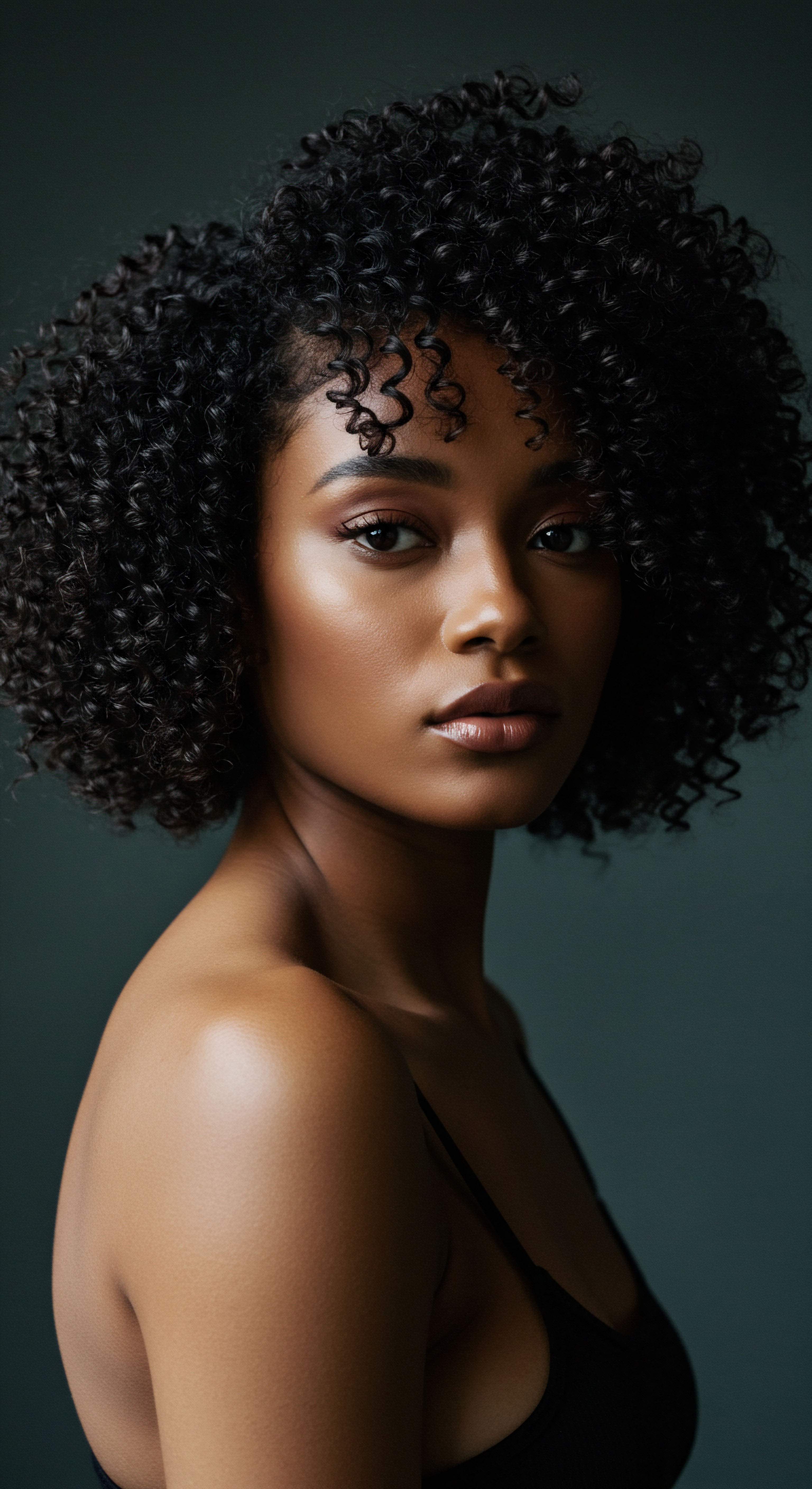
Heat Styling and Thermal Reconditioning
While extensions themselves are not heat styling, they are often styled with heat, and the temptation to blend natural hair with extensions using heat can be strong. Excessive heat can cause irreversible damage to the hair’s protein structure, leading to dryness, brittleness, and breakage. When extensions are in place, natural hair may be exposed to heat more frequently during styling sessions, especially if a smooth blend is desired. Prioritizing low-heat or no-heat styling methods for both natural hair and extensions, and always using a heat protectant when heat is applied, are practices that preserve hair integrity.

Relay
Having explored the inherent nature of textured hair and the practices surrounding extensions, we now move to a more nuanced consideration ❉ how do extensions truly interact with the delicate ecosystem of the scalp and the continuous cycle of hair growth, and what does the broader context of hair health reveal? This demands a deeper inquiry, one that connects biological realities with the subtle influences of care, environment, and even societal perspectives. The true efficacy of extensions in promoting length retention hinges upon a profound understanding of these interconnected elements.
The journey of length retention with extensions is not merely about external adornment, but a deep dialogue between application practices, scalp vitality, and the inherent biology of hair.

Can Hair Extensions Cause Permanent Hair Loss?
The relationship between hair extensions and hair loss is a subject that requires careful examination, moving beyond anecdotal experiences to consider scientific findings. While hair extensions do not inherently cause hair loss, improper application and maintenance can lead to conditions that compromise hair follicles and impede growth.
One of the most frequently cited concerns is Traction Alopecia. This condition arises from chronic, repetitive pulling on the hair follicles, often due to tight hairstyles, including braids, weaves, or extensions that exert constant tension. Over time, this sustained stress can damage the hair follicle, leading to inflammation and, in severe cases, permanent destruction of the follicle, resulting in irreversible hair loss.
A notable study on traction alopecia by Khumalo et al. in South Africa revealed that 31.7% of women and 9.4% of children in their study population experienced traction alopecia, with prevalence increasing with age. This highlights a significant concern, particularly in communities where tightly styled extensions are common. The study further indicates that the likelihood of developing traction alopecia increases when tension is applied to chemically processed hair, which may be less resistant to such forces than natural hair.
The weight of the extensions themselves contributes to this mechanical stress. When extensions exceed a certain length or are particularly dense, the added weight intensifies the pull on fragile hair shafts, exacerbating the risk of damage. This mechanical strain can disrupt the normal hair growth cycle, pushing hair follicles prematurely into the resting (telogen) phase, leading to increased shedding and reduced overall hair density.
Beyond mechanical stress, scalp health plays a critical role. Extensions can create an environment where the scalp is less accessible for regular cleansing, leading to product buildup, sweat, and oil accumulation. This can foster the growth of bacteria and fungi, potentially resulting in folliculitis, irritation, and inflammation. An irritated or inflamed scalp is not a conducive environment for healthy hair growth, and chronic inflammation can further contribute to hair thinning and loss.
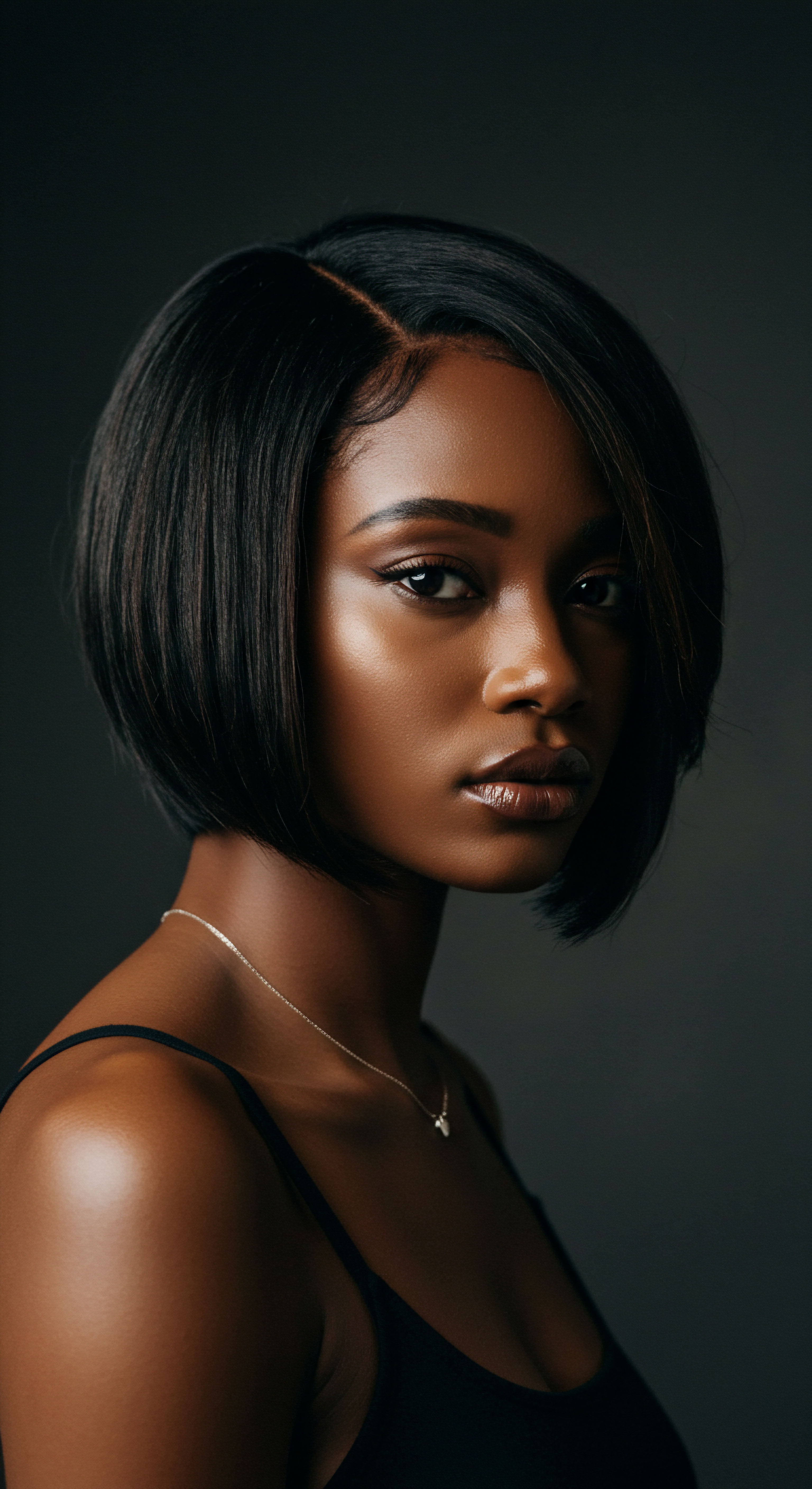
The Scalp Microbiome and Hair Extensions
The scalp is home to a complex ecosystem of microorganisms, collectively known as the scalp microbiome. This delicate balance of bacteria, fungi, and other microbes plays a significant role in maintaining scalp health, supporting hair growth, and defending against pathogens. A healthy scalp microbiome contributes to an optimal pH level (between 5 and 6), which is essential for microbial diversity and overall scalp well-being.
When extensions are worn, particularly those that cover the scalp extensively, the natural airflow to the scalp can be restricted. This can lead to an altered microenvironment, potentially disrupting the microbiome’s balance. An increase in moisture and warmth can create conditions favorable for the overgrowth of certain microbes, such as Malassezia species (associated with dandruff) or bacteria like Staphylococcus and Cutibacterium, which can cause folliculitis. The accumulation of product and dead skin cells, coupled with infrequent washing due to extensions, further exacerbates these issues.
A disrupted scalp microbiome can lead to:
- Irritation and Itchiness ❉ A common complaint when scalp conditions arise under extensions.
- Inflammation ❉ Chronic inflammation can push hair follicles into a resting phase, hindering growth.
- Impaired Nutrient Supply ❉ Clogged follicles and poor circulation, sometimes a result of tight extensions, can reduce the delivery of essential nutrients to the hair bulb.
Therefore, while extensions may protect the hair shaft, they demand a heightened awareness of scalp care to ensure the underlying foundation for hair growth remains healthy.
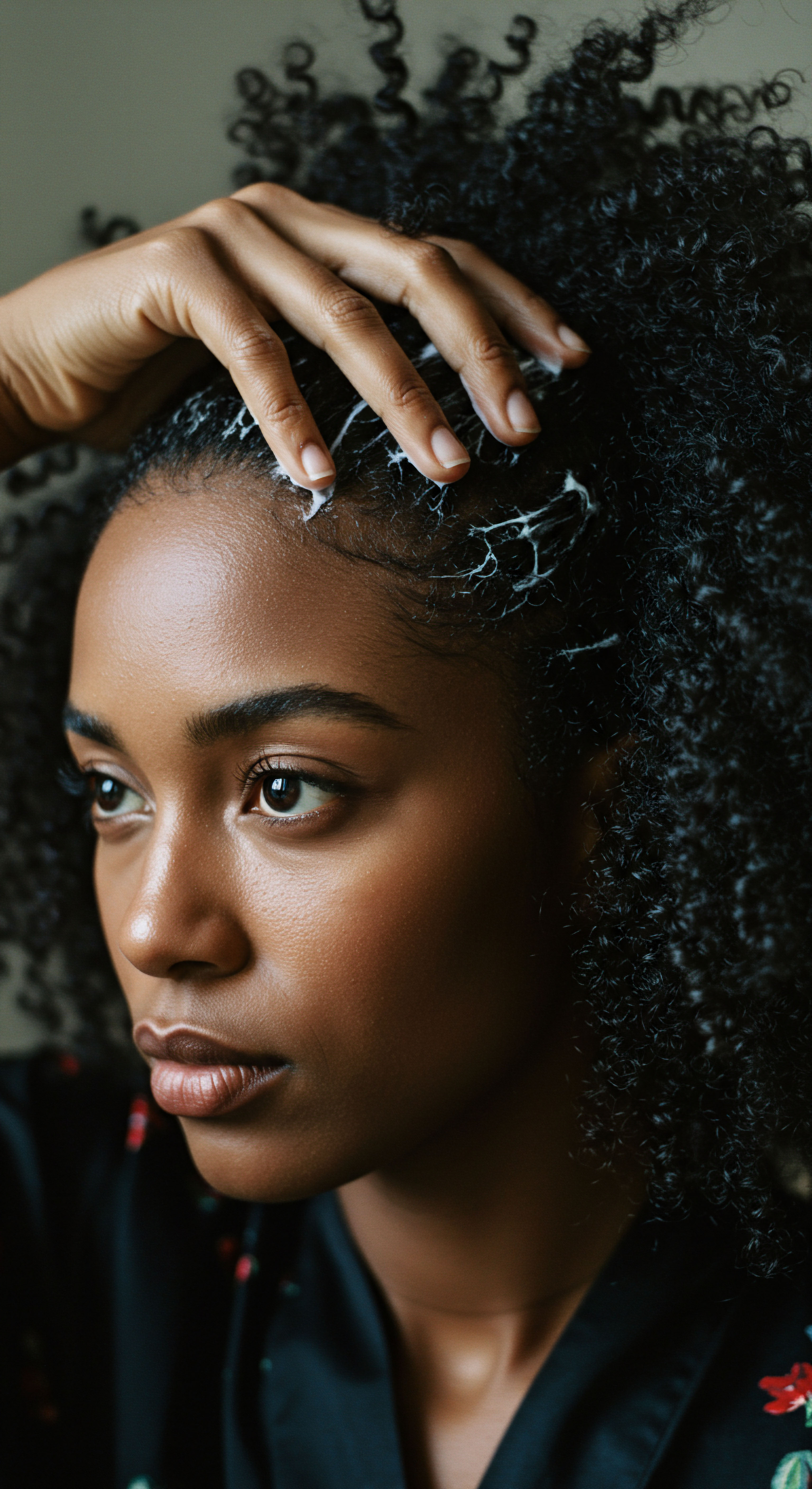
Hair Growth Cycle and Length Retention
The premise that extensions directly accelerate hair growth is unproven. Hair typically grows at an average rate of about half an inch per month, irrespective of whether extensions are present. The perception of increased length often stems from the ability to retain existing length by minimizing daily manipulation and breakage.
Length retention refers to the ability of hair to maintain the growth it achieves, rather than losing it through breakage or shedding. For textured hair, which is inherently more prone to breakage due to its structural characteristics, protective styles can be beneficial. By reducing exposure to styling tools, environmental stressors, and friction, extensions can theoretically help preserve the hair that has grown.
However, this benefit is contingent upon the aforementioned factors ❉ avoiding tension, managing scalp health, and providing appropriate care for the natural hair underneath. If extensions cause traction alopecia or scalp irritation, the very mechanism of length retention is undermined, leading to a counterproductive outcome. The goal should be to create an environment where the natural hair can thrive undisturbed, allowing its genetically determined growth potential to be realized.
| Practice Loose Installation |
| Potential Benefit Reduces stress on follicles. |
| Potential Risk None, when done correctly. |
| Practice Excessive Weight |
| Potential Benefit None. |
| Potential Risk Increased tension, breakage. |
| Practice Infrequent Cleansing |
| Potential Benefit None. |
| Potential Risk Scalp buildup, irritation, microbial growth. |
| Practice Regular Breaks |
| Potential Benefit Allows scalp and hair to rest. |
| Potential Risk None. |
| Practice Skilled Application |
| Potential Benefit Minimizes tension, prevents damage. |
| Potential Risk None, when done correctly. |
The interplay of biological realities and careful practice determines whether extensions become a true aid in the pursuit of length retention or a contributing factor to hair health challenges.
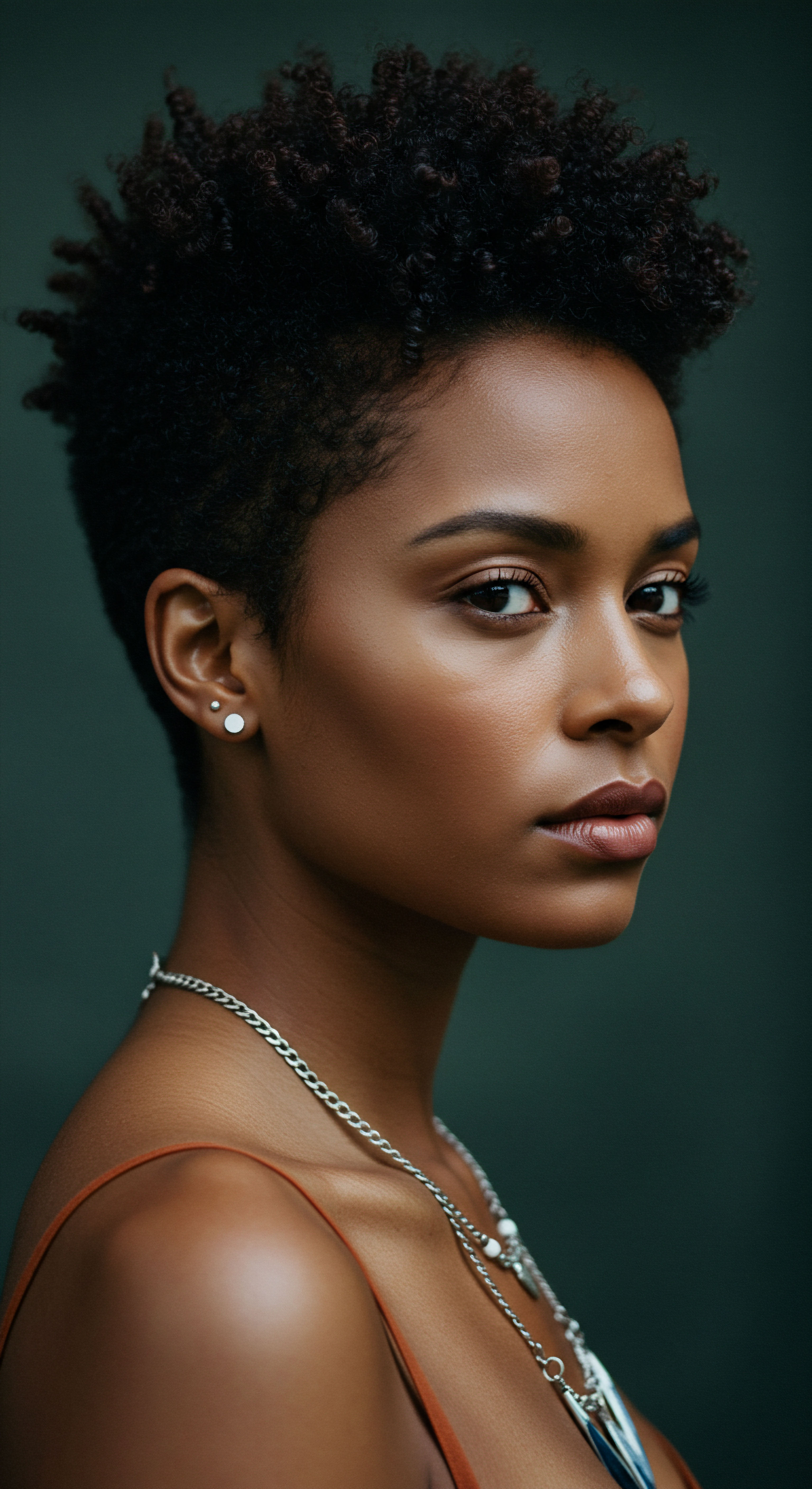
Reflection
The journey through the intricate world of textured hair and the role of extensions reveals a profound truth ❉ true hair health is a delicate balance, a conversation between inherent biology and the choices we make. Extensions, when approached with deep understanding and gentle intention, can serve as a supportive companion on the path to length retention and reduced breakage. Yet, their potential for benefit is always intertwined with the diligence of their application, the mindful care of the scalp, and a respectful awareness of the natural hair’s unique needs. It is a reminder that beauty, in its most genuine form, blossoms from a place of knowledge and thoughtful attention.

References
- 1. Markiewicz, E. & Idowu, O. C. (2024). The Genomic Variation in Textured Hair ❉ Implications in Developing a Holistic Hair Care Routine. MDPI .
- 2. Croda Beauty. (2025, March 26). Advancing the future of textured hair solutions .
- 3. Mimi et Mina. (2024, January 24). The Truth Behind 10 Popular Myths About Hair Extensions for Textured Hair .
- 4. International Journal of Development Research (IJDR). Revealing the Complexities of Hair Growth ❉ Understanding the Dynamics of the Hair Growth Cycle .
- 5. Noelle Salon. (2025, February 9). Master Scalp Care Under Wigs and Extensions Techniques .
- 6. Zantman Clinic. The details of the hair growth cycle .
- 7. Noelle Salon. (2021, December 27). How To Keep Your Scalp Healthy With Hair Extensions .
- 8. Cosmetics & Toiletries. (2021, February 1). Advocating Curls ❉ Optimizing Textured Hair Product Preservation .
- 9. Frontiers. (2022, May 11). Morphogenesis, Growth Cycle and Molecular Regulation of Hair Follicles .
- 10. ICCM Sydney. Understanding the 3 Stages of Hair Growth .
- 11. Global Textured Hair Movement. Education .
- 12. Ahdout, J. et al. (2012, December 1). Weft hair extensions causing a distinctive horseshoe pattern of traction alopecia. ResearchGate.
- 13. PMC. Integrative and Mechanistic Approach to the Hair Growth Cycle and Hair Loss .
- 14. Noelle Salon. (2024, February 6). Understanding Hair Types and Textures ❉ The Science Explored Boston .
- 15. ResearchGate. Exploring the Use of Natural Ingredients for Textured Hair UV Protection .
- 16. British Journal of Dermatology. Hair extensions ❉ A concerning cause of hair disorders .
- 17. Traction Alopecia ❉ Unraveling the Impact of Hair Extensions and Chemical Exposure. (2024, October 25).
- 18. MDPI. Exploring the Use of Natural Ingredients for the Protection of Textured Hair from Ultraviolet Radiation ❉ An In Vitro Study .
- 19. CurlsBot. (2025, March 8). The Science of Curly Hair Typing .
- 20. Earthtones Naturals. (2015, February 12). Hair Typing Systems .
- 21. MG Hair India – Human Hair Extension & Wig Manufacturer in India. (2025, April 17). Scalp Microbiome ❉ The Science Behind Healthy Hair .
- 22. Scandinavian Biolabs. (2025, March 4). Do Hair Extensions Cause Hair Loss? Traction Damage Explained .
- 23. Treatment Rooms London. (2024, April 17). Hair Extensions And Hair Loss – What You Need To Know .
- 24. Khumalo, N. P. et al. (2012). Traction alopecia in South African women ❉ A review. British Journal of Dermatology.
- 25. Mane Addicts. (2024, February 5). How to Keep Scalp Healthy Under Hair Extensions .
- 26. Noireônaturel. The Benefits of Natural Products to Enhance Your Textured Hair .
- 27. Curlsmith. 7 Trichologist Tips For A Healthy Scalp .
- 28. ResearchGate. (2024, July 15). (PDF) The Genomic Variation in Textured Hair ❉ Implications in Developing a Holistic Hair Care Routine .
- 29. All-day hair manageability for textured hair types – A revision of the current anti-frizz technologies and suggestions for the future .
- 30. Hairfree & Hairgrow. (2023, October 3). Hair Structure, Hair Anatomy and Physiology .
- 31. British Skin Foundation. Traction alopecia .
- 32. ResearchGate. (PDF) TRACTION ALOPECIA ❉ A REVIEW .
- 33. Curl Keeper. (2016, August 24). Top 5 Essential Ingredients Every Curly Hair Routine Needs .
- 34. Living Proof. Ultimate Curly Hair Guide ❉ Tips, Methods & Care Essentials .
- 35. Hexis Lab. Genomic Variation in Textured Hair ❉ Implications for Holistic Hair Care .
- 36. StatPearls – NCBI Bookshelf. Physiology, Hair .
- 37. Revlon Professional. Ultimate Curly Hair Guide ❉ Tips, Methods & Care Essentials .
- 38. News-Medical.net. Hairstyles and Traction Alopecia .
- 39. Clinikally. (2025, April 4). Hair Extensions for Thinning Hair? 5 Risks You Should Know .
- 40. BASF. (2024, April 26). Go Beyond the Basics of Textured Hair Care .
- 41. WebMD. (2024, August 25). Ingredients to Help Natural Hair Thrive .
- 42. Reddit. Scientifically-supported information about haircare .
- 43. PMC. Status of research on the development and regeneration of hair follicles .
- 44. Belt Hair Extensions Stylists. (2023, May 3). The Science Behind Hair Extensions ❉ Understanding Hair Quality and Textures for Belt Hair Extensions Stylists .
- 45. Reddit. (2021, June 2). 8 years of barely any length retention. When should I give up and start over? .
- 46. Reddit. (2023, December 5). TRIGGER WARNING ❉ hair length and beauty is determined by genetics SORRY .